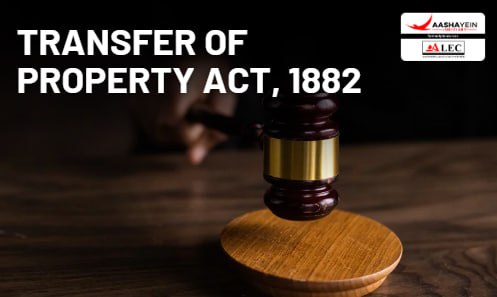What is Lis-Pendens?
The term “lis-pendens” originates from Latin, where “lis” means “litigation” and “pendens” means “pending.” Essentially, it refers to ongoing litigation. The doctrine is summarized in the maxim, “pendent lite nihil innovature,” meaning nothing new should be introduced during the litigation process.
Section 52 of the Transfer of Property Act, 1882 codifies this doctrine to prevent property transfers while a lawsuit is pending. The goal is to protect the finality of the court's decision and uphold public policy.
You can also read the latest judgment by visiting [Latest Judgment].
For more information, visit [Aashayein Enquiry Section]
Legal Basis of Lis-Pendens
The doctrine does not depend on whether the transferee knew about the ongoing case. Instead, it is founded on necessity, ensuring the court's judgment is not undermined by changes to property ownership during the case.
Key Cases Explaining Lis-Pendens
- Bellamy v. Sabine (1857)
Turner, L.J., clarified that the doctrine's basis is expediency rather than notice.
- Faiyaz Husain Khan v. Prag Narayan (1907)
It was affirmed that the principle ensures proper adjudication without external interference.
- Achut v. Shivaji Rao (1937)
This case reiterated that lis-pendens is guided by public policy rather than the doctrine of notice.
Essential requirements for application of Section 52:
i. There must be pendency of a suit or proceeding.
ii. The suit or proceeding must be pending in a Court of competent jurisdiction.
iii. A right to immovable property must be directly and specifically involved in the suit.
iv. The suit or proceeding must not be collusive.
v. The property in the dispute must be transferred or otherwise dealt with by any party to suit.
vi. The transfer must affect the rights of the other party to litigation.
Understanding Suit must be Pending
A case is considered pending from the moment a lawsuit is filed in a court until the final decision is fully implemented or the case becomes time-barred. Execution proceedings, which involve carrying out the court's orders, are also treated as part of the ongoing case under Section 52. The doctrine of lis pendens applies strictly to actions taken during the litigation period; any property transfers made outside this timeframe are unaffected. This principle covers legal proceedings that determine rights to immovable property, such as revenue disputes or co-operative society cases, but does not include administrative processes like those before a settlement officer. Additionally, the doctrine applies to settlements reached during the pendency of the case but not to agreements made after the case is withdrawn.
Cases Where Immovable Property Rights Are Involved: Examples of cases where Section 52 applies:
- Contract enforcement to transfer property
- Property division (partition suits)
- Pre-emption rights disputes
- Easement rights cases
- Mortgage-related cases
- Hindu widow maintenance claims tied to property
Cases Excluded from Lis Pendens: Examples where the doctrine doesn’t apply:
- Cases about money debts or damages
- Recovery of movable items
- Account settlements
- Rent recovery
- Movable property disputes
Top of Form
Bottom of FormCollusive Suits and Lis Pendens
The doctrine of lis pendens does not apply to collusive suits. A collusive suit is one filed with bad intentions, often to deceive or defraud a third party. These suits are fake and aim to manipulate the legal process for wrongful gains.
Property Transactions During a Pending Suit
Section 52 of the Transfer of Property Act applies to property transfers made while a lawsuit is ongoing. Transfers include actions like selling, gifting, leasing, or mortgaging. It also covers "other dealings," such as releasing claims, partitioning property, or surrendering rights, even if they do not count as formal property transfers. Both voluntary and involuntary transfers are included, as noted in the case of Motilal v. Suresh Chander (1885). However, transfers by someone unrelated to the case or its property are not bound by this rule.
For example, if a suit involves A (plaintiff), and B and C (co-defendants), and B transfers property during the case, C cannot benefit under Section 52 unless the dispute involves both B and C. However, A can claim this protection since they are part of the litigation.
Impact of Lis Pendens
The doctrine ensures that property sold during a pending case is still subject to the outcome of the lawsuit. It doesn’t invalidate the transfer but subjects the buyer's rights to the court’s decision. If the court allows the transfer during the case, this rule doesn’t apply. Essentially, lis pendens protects the rights of all parties involved in the litigation from being undermined by transfers during the case

